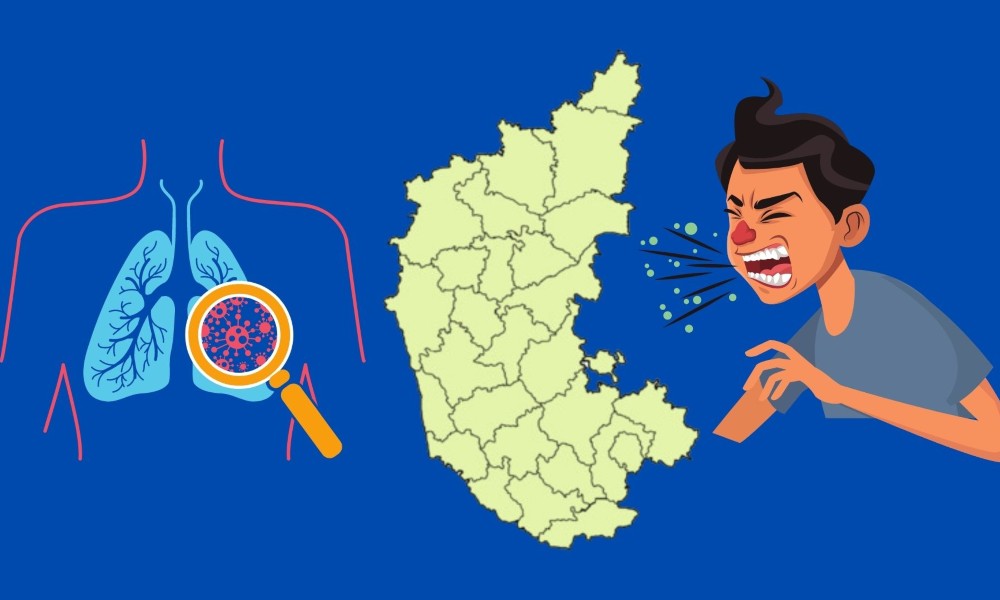World Health Organization fears that India’s ‘disease burden’ would increase significantly in 2022.
Bengaluru: Public health officials and doctors fear that disruptions in the healthcare system, caused by the pandemic, have prevented the detection and treatment of Tuberculosis (TB) patients in the last one and half years.
Dr. Nischit, the World Health Organization (WHO) medical consultant in Karnataka, said that in 2020, the total number of TB cases in the state fell from 91,000 to 65,000, and this year, the state has registered around 56,000 TB cases till October. But he added that the number of cases has been steadily increasing during the past two months.
Some health officials fear that the figure might be even higher since many people were afraid of coming to hospitals during the pandemic. SDS Tuberculosis Research Center and Rajiv Gandhi Institute of Chest Diseases in Bengaluru (RGICD), for example, have witnessed an increase in the number of patients in the past two months. A junior doctor at the Institute said that they are seeing around 50 TB patients daily. Many of them have Multidrug-Resistant TB (MDR-TB). “If they had reported to the hospital earlier, we could have saved many lives,” he added.

The WHO states that MDR-TB occurs when the bacteria that causes tuberculosis (TB) develops resistance to the antimicrobial drugs used to cure the disease. In India, there are around 124,000 MDR-TB cases currently.
The WHO further states, “Most people with TB are cured by a strictly followed, six-month-long drug regimen that is provided to patients with support and supervision. Inappropriate or incorrect use of antimicrobial drugs, or use of ineffective formulations of drugs (such as the use of single drugs, poor-quality medicines, or bad storage conditions), and premature treatment interruption can cause drug resistance. It can be transmitted, especially in crowded settings such as prisons and hospitals.”
Pallavi VS, a Nursing Officer at the RGICD said that they have 25 patients in the female ward. Ten of them have MDR-TB.
The lack of progress in the past two years in TB detection has affected the National TB elimination program (NTEP) that aims to make India TB-free by 2025. Dr. Hari Prasad, consultant, pulmonary diseases and critical care at Apollo Hospitals, said that the TB mortality rate has significantly increased since the pandemic began. “The pandemic severely disrupted the healthcare system. Public health centres (PHCs) and other facilities were either closed or lacked in terms of the number of staff. Also, TB has a few symptoms similar to Covid-19, so people were not willing to visit hospitals. That’s why we witnessed a sudden drop in the caseload,” he said, “However, TB has been here for thousands of years. It is difficult to determine how much of an effect the pandemic has had on TB eradication, but it has caused enough problems for sure.”
Dr. Ramesh Kumar Reddy, Joint Director (TB), Government of Karnataka, is still confident about the state’s progress to achieve the 2025 target. “We have an existing set of plans for TB elimination and the state is on course to achieve the target,” Reddy said.
However, India is not the only country to face setbacks due to the pandemic. The Global tuberculosis report, 2021 by the WHO mentions that there was an 18 percent decrease in TB cases worldwide between 2019 and 2020. India reported a 41 percent drop, the highest among all the countries.
But there was an increase in TB deaths worldwide, as 1.3 million people died from the disease in 2020, up from 1.2 million in 2019. The report also mentions, “India’s disease burden is expected to increase in 2021-22, following the completion of the country’s first-ever national TB prevalence survey.”
Dr. Subir Kumar Dey, former head of the Department of Pulmonology, Calcutta National Medical College, said that even before Covid, India was not achieving the desired amount of decrease in TB cases. Dey added, “TB is a passive disease, it is not easy to combat with it. It might take 20 more years to completely eliminate it.”




